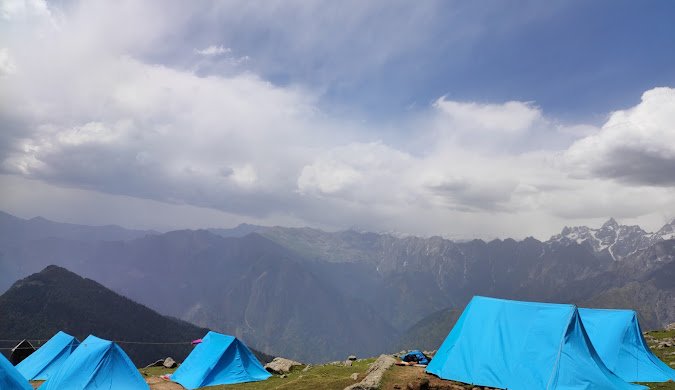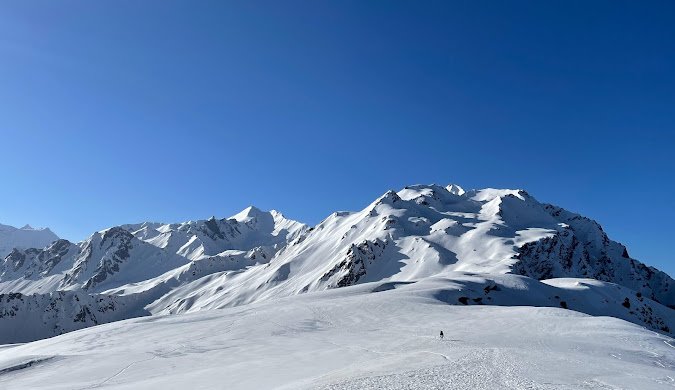Nagtibba Trek
Dehradun to Dehradun
Duration (2D/1N)
Tour Category - Trek
Difficulty -asy to Moderate
Basic Inclusions
Meal Included
Stay Included
Transfer
Activity
Highlights
- Bonfire & Camping: Enjoy a cozy bonfire followed by a night of camping in the serene surroundings of Nag Tibba.
- Nag Tibba summit for panoramic views of peaks like Trishul, Nanda Devi, and Banderpooch.
About this tour
Nag Tibba, often referred to as Serpent’s Peak, stands as the towering guardian of the Garhwal region, reaching an impressive altitude of 3022 meters (9,915 feet). Nestled in the heart of the lesser Himalayas, it offers an enchanting blend of serene landscapes and adventurous thrills. From its lofty vantage point, trekkers are treated to panoramic views of iconic peaks like Swargarohini, Banderpooch, and Kala Nag, all of which seem to whisper tales of ancient Himalayan legends.
A trek to Nag Tibba is more than just a journey to a summit; it’s a passage through lush oak forests, dense deodar groves, and expansive meadows that stretch as far as the eye can see. The relatively moderate difficulty of the trek makes it ideal for both novices eager to take their first steps into the Himalayas and experienced trekkers looking for a rejuvenating weekend adventure.
The allure of Nag Tibba is its accessibility. Just a short drive from Delhi, it’s an escape into nature that doesn’t require weeks of preparation. The two to three-day trek offers an immersive experience in the lap of nature, with every turn revealing a new, awe-inspiring sight. Whether you’re wandering through quaint mountain villages, where time seems to slow down, or standing atop the peak, absorbing the sweeping views of the snow-dusted Himalayas, the trek has something for everyone.
One of the most captivating aspects of Nag Tibba is the magical sunrise that bathes the snow-capped peaks in golden light. The trek’s route is lined with cultural gems as well, like the ancient Nag Tibba Temple, dedicated to the serpent god. At the summit, the temple provides a serene spot for contemplation, a perfect way to soak in the beauty of the surroundings while reflecting on the journey.
The trek’s ease in terms of difficulty is complemented by its gradual ascent, making it perfect for first-time trekkers and families looking for a comfortable, yet fulfilling experience. It’s an ideal choice for those who want to experience the raw beauty of the Himalayas without venturing too far off the beaten path. The route is meticulously curated, offering trekkers a mix of peaceful moments and adrenaline-fueled excitement as they reach the summit, where the world below seems distant and insignificant.
The landscape of Nag Tibba is ever-changing, with every season bringing a new hue to the canvas. In winter, the snow transforms the region into a winter wonderland, while summer reveals vibrant meadows adorned with colorful wildflowers. No matter the season, the trek to Nag Tibba guarantees an experience of immense beauty, peace, and an unforgettable connection with nature.
Whether you’re a nature enthusiast, adventure seeker, or simply someone in need of a tranquil escape, Nag Tibba is a destination that promises to leave you in awe and inspire you to return for more. It’s not just a trek, but a journey of discovery that will stay etched in your memories for years to come.
Itinerary
Your journey begins with a pick-up from Dehradun railway station, followed by a 3-hour drive to Pantwari. After a short break, we’ll start our 5.5 km trek to the Nag Mandir campsite, passing through picturesque villages, rhododendron forests, and meadows. The trek takes around 4-5 hours. After reaching the campsite, enjoy a snack, bonfire, and a delicious dinner. Overnight stay in tents.
Start early for a 3 km trek to the Nag Tibba summit, where you’ll be rewarded with panoramic views of peaks like Trishul, Nanda Devi, and Banderpooch. After enjoying the views, return to Nag Mandir for lunch before descending to Pantwari. Our vehicle will be waiting to drive you back to Dehradun, concluding your adventure.
Request for Quote
Starts from ₹4,000
Included
- 4 meals: 1 Breakfast, 2 lunches, and 1 dinner during the trek
- Bonfire for a cozy evening ( if possible)
- All necessary entry permits.
- Applicable taxes included
Excluded
- Optional activities or additional tickets
- Personal expenses (porterage, tips, laundry, etc.)
- Additional costs due to unforeseen circumstances (cancellations, roadblocks, landslides, strikes, or emergency evacuations)
- Anything not listed in the inclusions
- Loss, theft, or damage of personal belongings
Things to Carry
These items are more geared toward durability, comfort, and readiness for outdoor adventure and rugged conditions.
Backpacks:
- Rucksack (Large trekking backpack for carrying all essentials): A spacious, durable backpack designed to carry all necessary gear comfortably for longer treks.
- Day-Pack (Smaller for summit or short trips): Lightweight and compact, perfect for carrying essentials for shorter, daily adventures like summiting.
Footwear:
- Trekking Shoes (Sturdy with ankle support, great for rocky terrain): Provides stability and ankle support on rough, uneven surfaces, essential for trekking.
- River Shoes / Waterproof Footwear (For river rafting): Water-resistant footwear designed to protect feet while participating in water-based activities like rafting.
- Sandals / Floaters (For campsite comfort, after extreme activities): Easy-to-wear footwear for relaxation after rigorous activities, letting feet breathe.
Clothing:
- Quick-Dry Tees (Lightweight and breathable for all-day activity): Wicks away moisture quickly, keeping you dry and comfortable on long hikes.
- Track Pants (Comfortable for movement, moisture-wicking): Flexible, breathable pants that help you stay comfortable during physical activities.
- Hiking Pants (Rugged, durable material for tough trails): Sturdy pants made from durable material that stand up to harsh environments and tough trails.
- Waterproof Jacket / Poncho (Protection from rain): Keeps you dry in wet weather, covering both you and your bag.
- Insulated Jacket (For cold weather conditions, snow hikes): Essential for warmth in snow or high-altitude cold conditions.
- Woolen Gloves & Woolen Socks (For cold weather): Keep your extremities warm in freezing conditions, with the added benefit of odor control for long trips.
- Thermals (For high-altitude or snow conditions): Insulating garments that trap body heat, necessary for extreme cold.
- Hoodie (Versatile for layering): Lightweight and comfortable, perfect for layering in varying weather.
Hydration & Snacks:
- Re-usable Water Bottle (Stay hydrated throughout the adventure): Essential for hydration; eco-friendly and refillable.
- Snacks / Energy Bars / Trail Mix (For quick energy boosts during breaks): Provides quick, easy-to-carry fuel for sustained energy on the go.
Personal Care & Safety:
- Sunscreen (SPF 40+ for long hours under the sun): Protects your skin from harmful UV rays during extended outdoor activities.
- Insect Repellent (Protection from bugs): Keeps insects like mosquitoes away, preventing bites and discomfort.
- First Aid Kit (For minor cuts, bruises, and other accidents): Contains basic medical supplies for treating minor injuries.
- Sanitizer (To maintain cleanliness): Essential for hygiene, especially when clean water is unavailable.
- Lip Balm (For protection against windburn): Prevents dry, cracked lips in harsh weather conditions.
- Personal Medication (Any essentials like painkillers, altitude sickness tablets, etc.): Any personal medical needs like medication for pain, altitude sickness, etc.
Electronics & Navigation:
- Headlamp (For nighttime hikes or late arrivals): Hands-free light source for navigating in low-light or nighttime conditions.
- Power Bank (To keep electronics charged): A portable charger to ensure your devices stay powered, especially in remote areas.
- GPS or Compass (For navigation in remote areas): Essential for finding your way, especially if there are no marked paths.
- Camera (To capture moments): A camera to document memories and scenic views from your adventure.
Additional Gear:
- Trekking Poles (For stability on tough terrain): Provides additional support and balance on rocky or uneven terrain.
- Sunglasses (For protection against glare): Protects your eyes from harsh sunlight, particularly at higher altitudes.
- Waterproof Bags (For storing electronics and sensitive items): Keeps your electronics and valuables safe and dry in wet conditions.
- Riding Gear (If part of the activity involves biking/motorcycling): Protective gear for biking or motorcycling adventures.
- Gaiters (For snow or muddy conditions): Protects legs from snow, water, and mud, helping keep you clean and dry.
- Gloves (For snow or trekking poles): Keeps hands warm in cold conditions and aids grip on trekking poles.
Documents & Identification:
- Personal ID, Emergency Contacts, Insurance Details: Critical identification and emergency information for safety and accessibility during travels.





